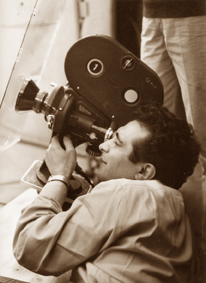In Good Hands: archiving correctly
 Good preservation allows films to survive the test of time decades after their original release. Miguel Gonzalez reports on the challenges of preserving the country’s audiovisual history.
Good preservation allows films to survive the test of time decades after their original release. Miguel Gonzalez reports on the challenges of preserving the country’s audiovisual history.
Human lifespan and collective memory are both so short that it’s no surprise many films are condemned to disappear from the face of the Earth, completely forgotten by its audience. But when the work is being archived and preserved properly, there’s always the possibility of a second chance. Take, for example, the work of Giorgio Mangiamele.
‘Giorgio who?’ Many may ask.
Italian-born Mangiamele made his first feature Il Contratto in Melbourne in 1953. A pioneer, he was the first to document the experience of migrants in post-war Australia, and was one of the few art cinema directors working in the industry in the difficult decades of 1950 and 1960. Although his feature Clay was the first Australian film to screen at Cannes to critical acclaim, his work never had a huge impact at the box office. Fifty years later, the story sounds eerily familiar.


I keep all my films on an external hard drive. But films that are made with no budget in a situation where you’re reduced to a hobbyist? I doubt anyone will care…my films will probably end up in the bin some day when I die.
It should be remarked that author Gonzalez is a staffer with NFSA. His story does not say where the Mangiamele films have been over all this period. Since CLAY, at least, was AFI-awarded, this film maker has not been unknown.
Representation within NFSA of films that won AFI awards, let alone were nominated, is patchy and lessening over the years since 1980.